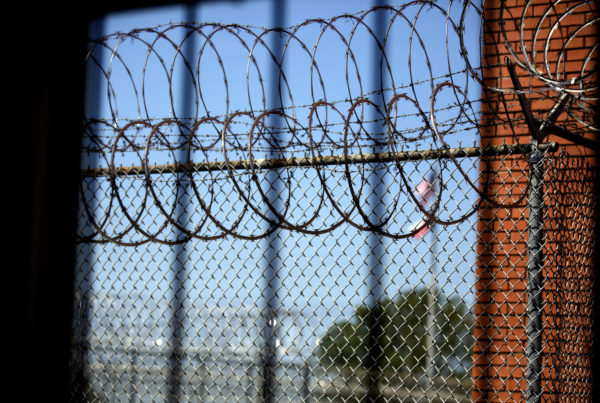Prior to the Iran nuclear deal, American and international sanctions shackled the regime. From 2012 to 2015, the Iranian economy shrank by 9 percent per year, oil exports fell by more than half, and more than $120 billion held in overseas banks were frozen.
Lifting those sanctions spurred roughly 7 percent growth over the past two years, returned oil exports to nearly pre-sanctions levels, and unfroze the countries foreign assets.
Now the Trump Administration is facing a May 12 deadline to decide whether to withdraw from the deal.
William Inboden, the executive director of the Clements Center for National Security at the University of Texas at Austin, the deadline is somewhat artificial.
“It’s something that President Trump put in when he refused to certify several months ago,” Inboden says. “This deadline is the one for the U.S. to possibly formally withdraw from the deal and then reimpose sanctions on Iran.”
Inboden says the deal represents an ongoing tension between presidential power and congressional power to impose sanctions.
“We’re in a little bit of uncharted territory here,” Inboden says. “President Trump would think that he can unilaterally reimpose the sanctions, but Congress may want to have a say on that, as well. The language of the law is a little bit ambiguous there.”
The U.S. is far from being the only country involved in these negotiations, though.
“Because the deal involves several other countries – the French, the British, the Germans, the Russians, the Chinese, and of course the Iranians – with the U.S. withdrawing, it certainly would practically be the death knell of the deal, but the others may formally decide that they would want to continue it,” Inboden says. “I rather doubt that, but again, that’s where we’re in pretty uncharted territory here, politically and legally.”
The deal also has implications for European businesses that have flourished in Iran since the sanctions were lifted.
“If the deal were to fall apart, if the U.S. were to reimpose sanctions on Iran,” he says, “those European companies would then have to decide, do they prefer staying in the U.S. market or the Iranian market.”
That’s a decision that their political leaders are trying to avoid, but it’s unclear what the future holds.
“It’s a fool’s errand predicting anything President Trump is going to do,” Inboden says. “He may not even know himself. That said, with caveats, if I had to make a prediction, I do think most signs are that he’s going to withdraw from the deal on May 12.”
Written by Jen Rice.
















